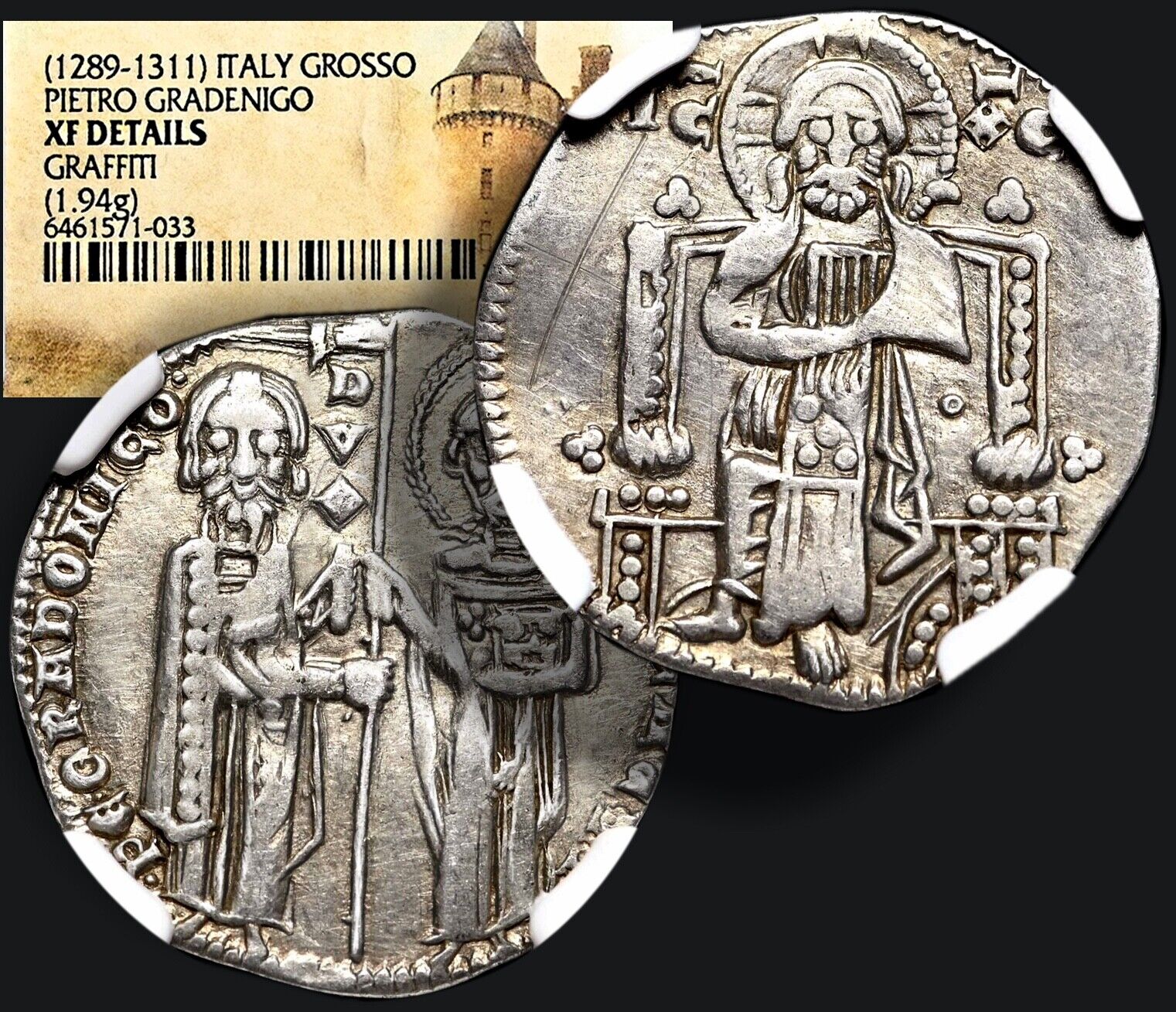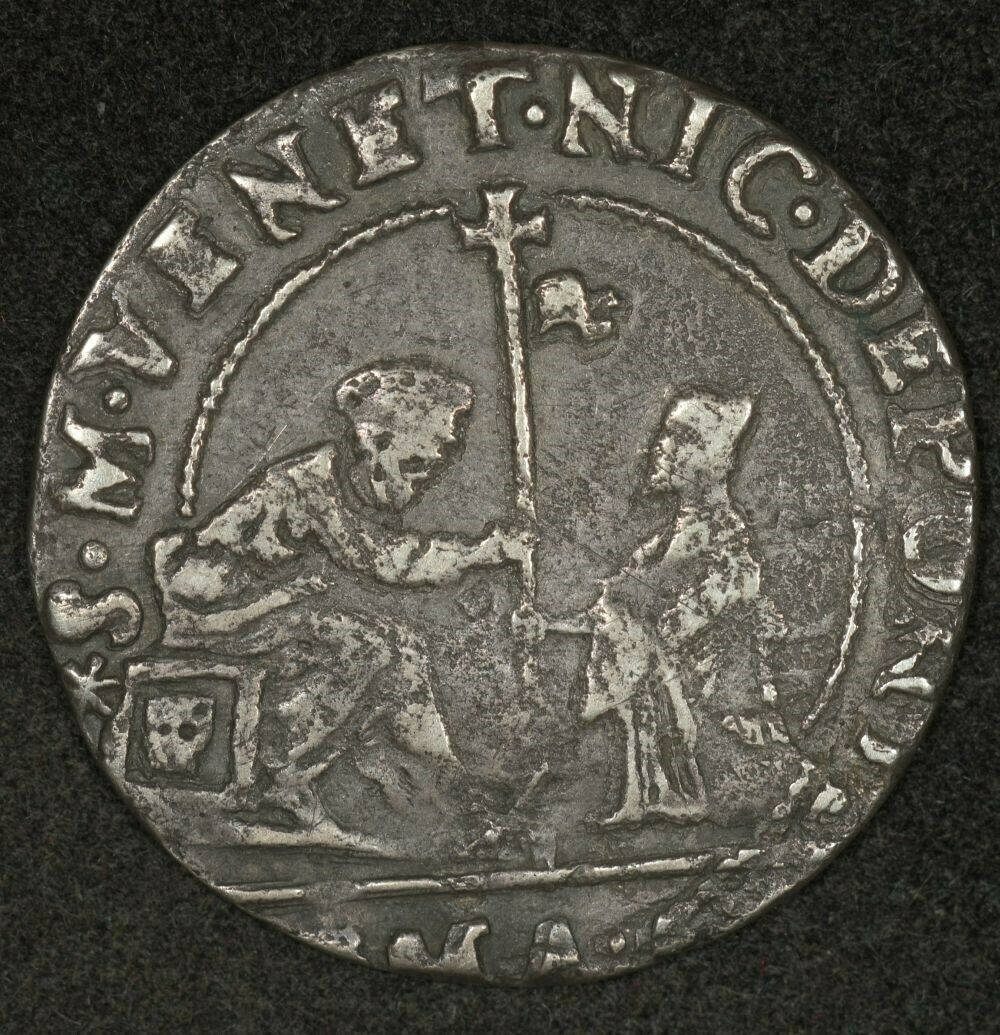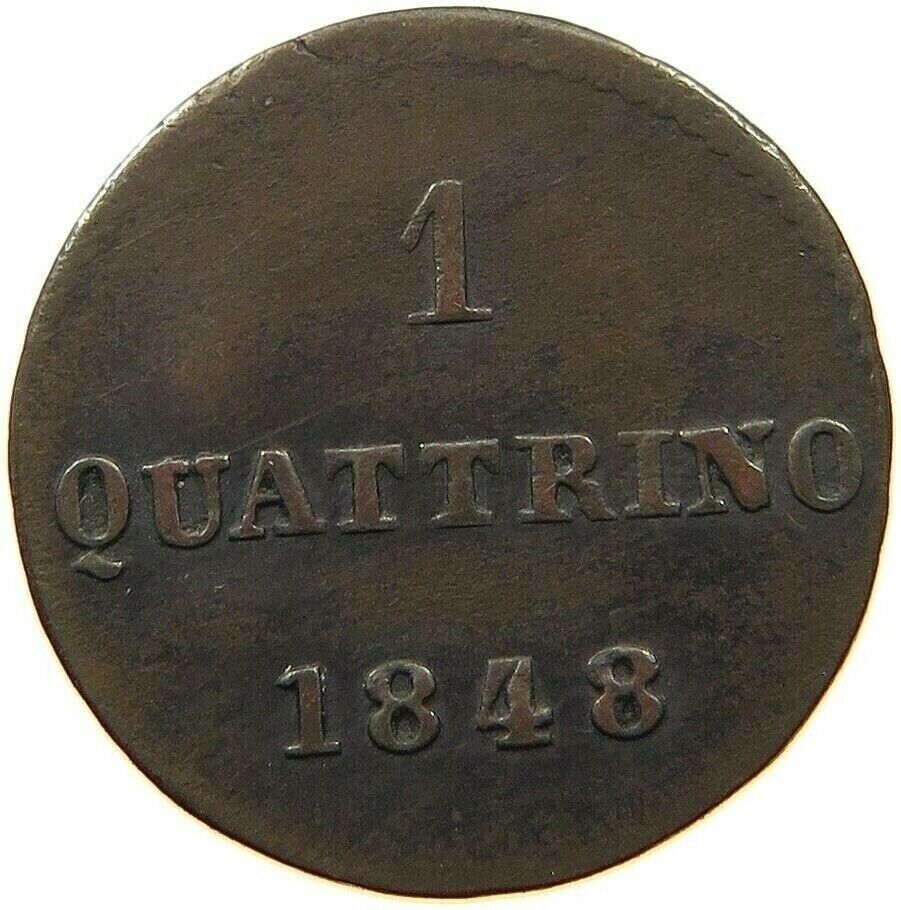-40%
PIETRO GRADENIGO, (Doge)-Italy 1289-1311 Æ SILVER Grosso Coin NGC +COA / GGcoins
$ 118.8
- Description
- Size Guide
Description
Pietro Gradenigo(Doge)
Venezia (Venice) - Italian States
Reign;
1289 -1311
AD.
Æ
SILVER 1 Grosso
Coin
"
NGC XF. Certified"
Size;
21mm
/ weight;
1
.94gm.
Obverse:
PE GRADONICO DVX S M VENETI.
Doge
Gradenigo & St. Marco standing facing, holding banner...
Reverse:
IC - XC,
Christ Pantokrator enthroned facing...
Ref;
Paolucci 2.
_________________________________________________________
History
Pietro Gradenigo
(1251 – 13 August 1311) was the 49th Doge of Venice, reigning from 1289 to
his death.
When he was elected Doge, he was serving as the podestà of Capodistria in Istria.
Venice suffered a serious blow with the fall of Acre, the last Crusader stronghold in the Holy Land, to
the Mamluks of Egypt in 1291. A war between Venice and Genoa began in 1294, and Venice sustained
some serious losses: it lost a naval battle, its possessions in Crete were pillaged and the Byzantine
emperor, Andronikos II, arrested many Venetians in Constantinople. In response, the Venetian fleet
sacked Galata and threatened the imperial palace of Blachernae, but in 1298 they lost again - this time
at Curzola. Eventually, in 1299 the two republics signed a peace treaty.
Doge Gradenigo was responsible for the so-called Serrata del Maggior Consiglio, the Locking of the
Great Council of Venice. This new law, passed in February 1297, restricted membership of the future
Councils only to the descendants of those nobles who were its members between 1293 and 1297.
This move created an oligarchic system, disenfranchising a great majority of the citizens and
provoking some unrest.
In 1308, during Gradenigo's reign as doge, Venice became involved in war with the Papacy over the
control of Ferrara and on 27 March 1309 the Republic was excommunicated by Pope Clement V,
barring all Christians from trading with Venice.
The Doge's policy, seen by many as disastrous, led to a plot to depose him and the Great Council,
led by Bajamonte Tiepolo and other members of the aristocratic families.
On 15 June 1310, the coup failed and its leaders were severely punished. Tiepolo's plot led to the
creation of the Council of Ten, initially as a temporary institution, which later evolved into the
permanent body which in reality governed the Republic.
On 13 August 1311, Gradenigo died, and, since Venice was under interdict and the religious
ceremonies could not be held, he was buried in an unmarked grave on Murano.
He was married first to Tomasina Morosini (with whom he had a daughter, Anna, wife of J
acopo I da Carrara) and then to Agnese Zantani
_________________________________________________________________
Photos are of the actual coin that you will receive..!
Authenticity is guaranteed or your 100% money back. Please ask any question
before you bid. If there is any issue pertaining to your order from us , please
message us directly and we will resolve the matter as timely & smoothly as
possible, we strive to remain free from any negative feedback.
Certificate of Authenticity--(COA):
What is a certificate of authenticity and what guarantees do you give that the item is authentic?
Lifetime Guarantee of Authenticity
,
Several of the Ancient Coins sold here are provided with a Certificate of













